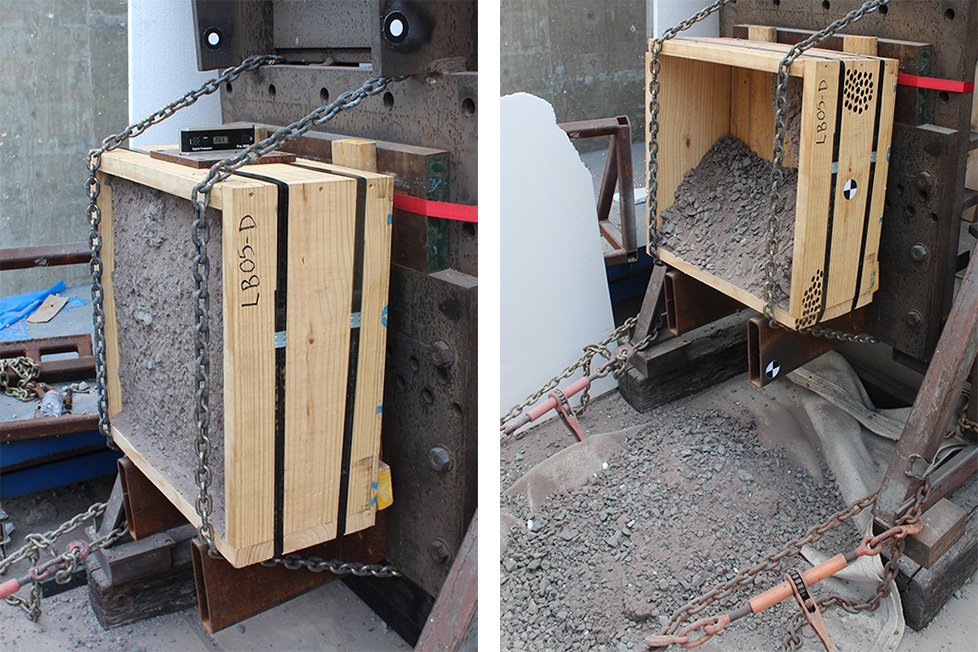Background
SwRI had performed impact tests measuring momentum enhancement when geological materials (such as a collection of rocks) were struct before the NASA DART mission. On its way to impact asteroid Dimorphos, the DART spacecraft took photographs of the surface of the asteroid. The surface implies the asteroid is a rubble pile. We chose to perform impacts into targets made of crushed basalt, loosely held together, and to measure and study the resulting momentum enhancements. We were interested in seeing if the size distribution of the rock affected the momentum enhancement and if there was a size dependent effect (meaning that the nondimensional momentum enhancement β was affected by the absolute size of the impactor).
Approach
Perform additional impact experiments (at 2 and 5.5 km/s) and computations.

Figure 1: A series of images from a 2 km/s impact of a 4.45 cm diameter aluminum sphere into a crushed basalt target, showing the initial high-speed crater ejecta that is liberated and then the lower speed ejecta that produces most of the momentum enhancement. (Test #2).

Figure 2: Pre- and post-test images of a 4.45 cm diameter aluminum sphere striking a crushed basalt target. For this shot, no water was added to the target as a binder: the crushed basalt, sand, and grout (dry) were packed in place and then impacted. (Test #4)
Accomplishments
Impact tests were performed at lower speeds (2 km/s) with a 50 mm powder gun at the SwRI outdoor ballistics range and at higher speeds (5.5 km/s) with our two-stage light gas gun. These tests are challenging to perform, as the crushed rock targets are over 200 kg each and the entire pendulum assembly is over 1 metric ton. Upon impact, the swing is measured to determine how much momentum enhancement occurred.
Computations were also performed, showing (among other things) that reduced density impactors produce less mometnum enhancement when impacting rubble piles. This result is interesting in the context of extrapolating our test results and the DART result to other impact scenarios.

Figure 3: Numerical simulations using EPIC. Left shows impact of a small aluminum sphere at 5.5 km/s into a solid sandstone block in an aluminum holder. Right shows impact into a packed collection of small sandstone cubes, with the cutaway to show how different the impact event is.

